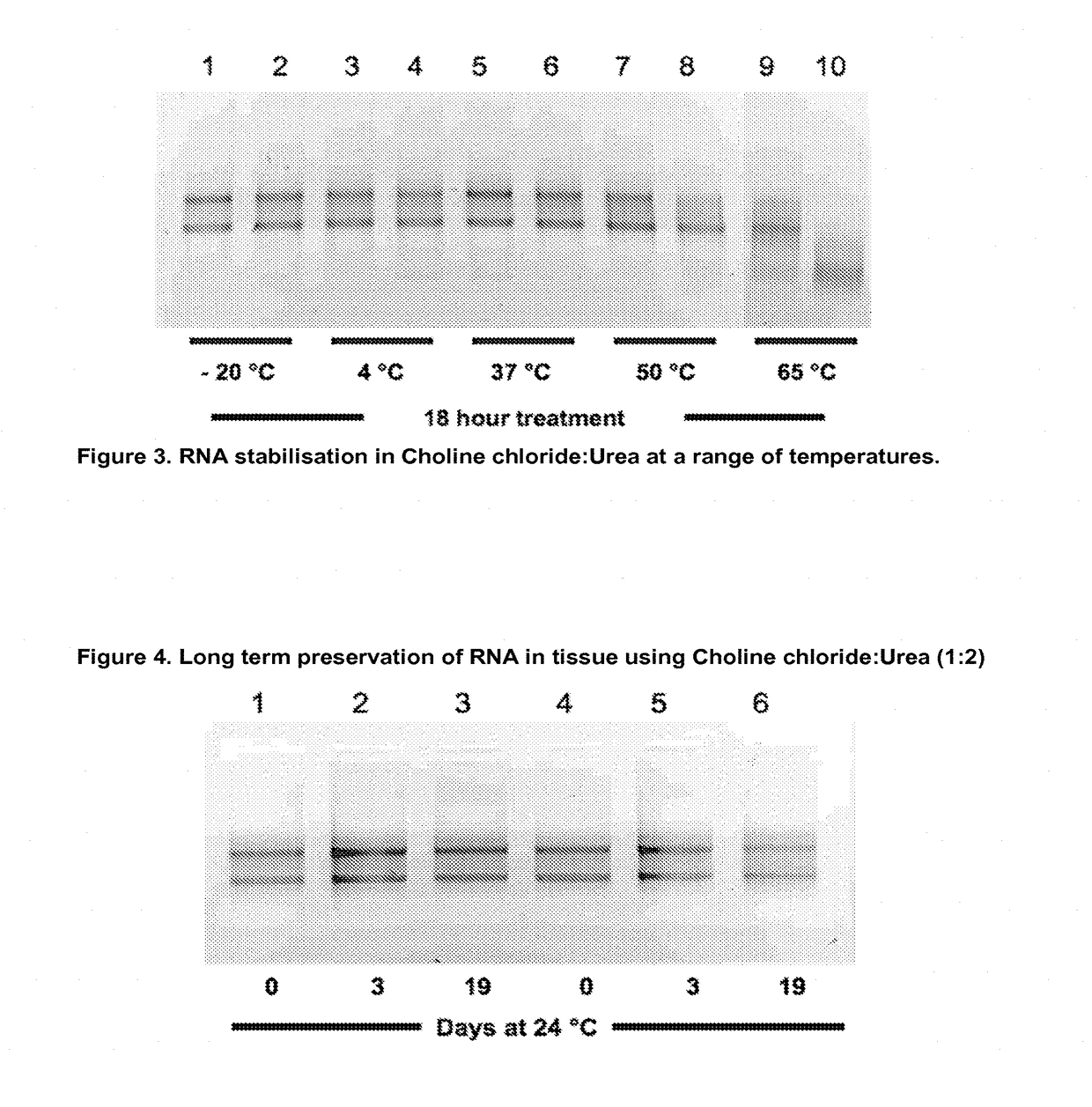Sample fixation and stabilisation
a technology of sample fixation and stabilisation, which is applied in the field of stabilisation of biomolecules to achieve the effect of inhibiting the degradation of biomolecules
- Summary
- Abstract
- Description
- Claims
- Application Information
AI Technical Summary
Benefits of technology
Problems solved by technology
Method used
Image
Examples
Embodiment Construction
1. RNA Stabilisation in Animal Tissue Samples
[0225]To 400 μl of Choline chloride:Urea (1:2 mol:mol) in a standard 1.5 ml polypropylene microcentrifuge tube was added 2-25 mg rat liver sample and pre-incubated for 20 minutes at room temperature to allow stabilisation and / or fixation, the sample can then be incubated in the DES mixture at −80, −20, 4, 20 or 37, 42 or 55° C. for one hour to several weeks prior to recovery of the tissue sample with forceps followed by RNA purification as set out below.
[0226]The rate of fixation for some dense, air filled and / or problematic tissues can be improved using a vacuum system such as a Nalgene hand held vacuum pump (Cat. No. 6132-0020, ThermoScientific, UK) during fixation.
[0227]The sample is then added to a fresh tube containing 350 μl of Lysis buffer RLT, the tissue homogenised according to manufacturer's instructions (RNeasy Mini Kit, Cat. No. 74106, Qiagen, Germany). 300 μl portions of the lysate were then purified immediately according to ...
PUM
 Login to View More
Login to View More Abstract
Description
Claims
Application Information
 Login to View More
Login to View More - R&D
- Intellectual Property
- Life Sciences
- Materials
- Tech Scout
- Unparalleled Data Quality
- Higher Quality Content
- 60% Fewer Hallucinations
Browse by: Latest US Patents, China's latest patents, Technical Efficacy Thesaurus, Application Domain, Technology Topic, Popular Technical Reports.
© 2025 PatSnap. All rights reserved.Legal|Privacy policy|Modern Slavery Act Transparency Statement|Sitemap|About US| Contact US: help@patsnap.com



